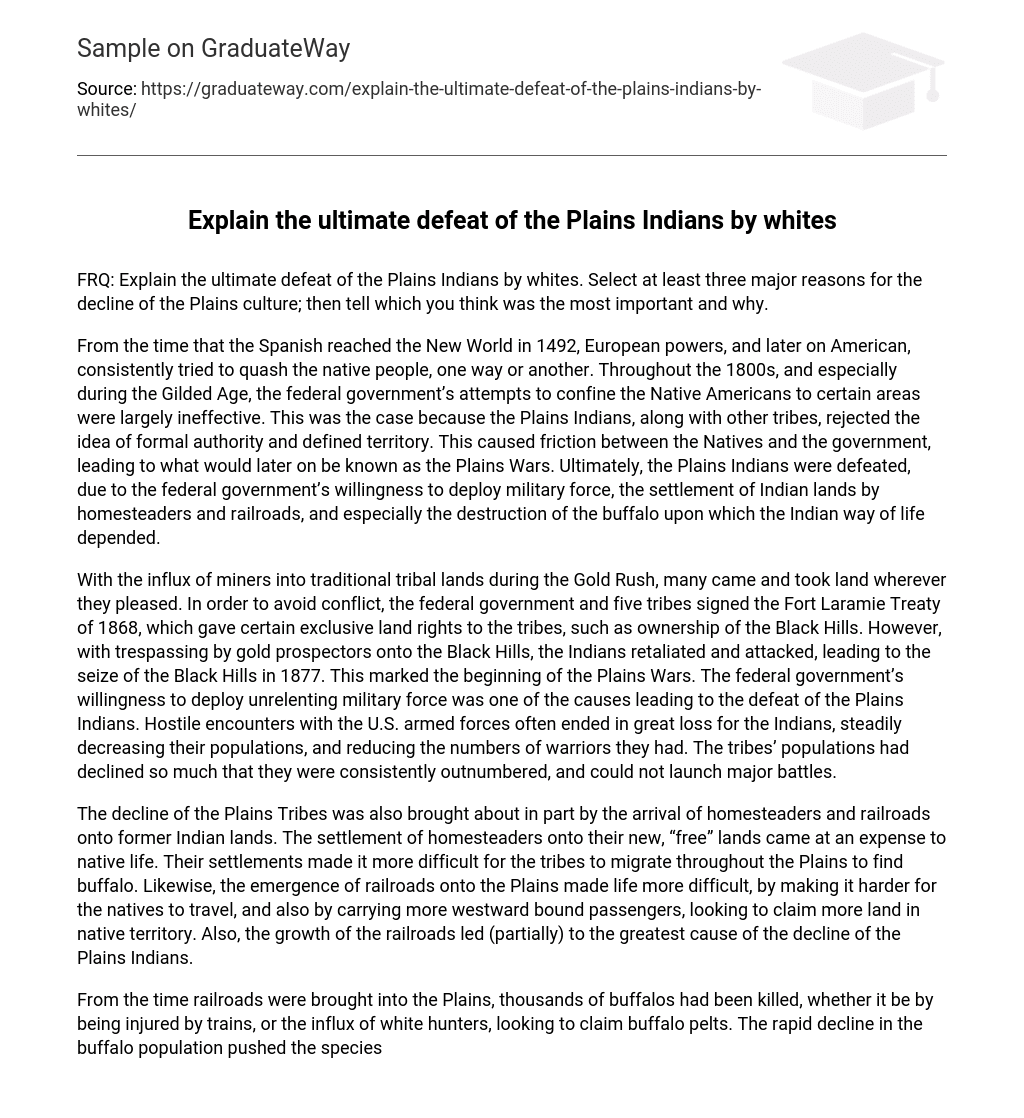From the time that the Spanish reached the New World in 1492, European powers, and later on American, consistently tried to quash the native people, one way or another. Throughout the 1800s, and especially during the Gilded Age, the federal government’s attempts to confine the Native Americans to certain areas were largely ineffective.
This was the case because the Plains Indians, along with other tribes, rejected the idea of formal authority and defined territory. This caused friction between the Natives and the government, leading to what would later on be known as the Plains Wars. Ultimately, the Plains Indians were defeated, due to the federal government’s willingness to deploy military force, the settlement of Indian lands by homesteaders and railroads, and especially the destruction of the buffalo upon which the Indian way of life depended.
With the influx of miners into traditional tribal lands during the Gold Rush, many came and took land wherever they pleased. In order to avoid conflict, the federal government and five tribes signed the Fort Laramie Treaty of 1868, which gave certain exclusive land rights to the tribes, such as ownership of the Black Hills. However, with trespassing by gold prospectors onto the Black Hills, the Indians retaliated and attacked, leading to the seize of the Black Hills in 1877.
This marked the beginning of the Plains Wars. The federal government’s willingness to deploy unrelenting military force was one of the causes leading to the defeat of the Plains Indians. Hostile encounters with the U.S. armed forces often ended in great loss for the Indians, steadily decreasing their populations, and reducing the numbers of warriors they had. The tribes’ populations had declined so much that they were consistently outnumbered, and could not launch major battles.
The decline of the Plains Tribes was also brought about in part by the arrival of homesteaders and railroads onto former Indian lands. The settlement of homesteaders onto their new, “free” lands came at an expense to native life. Their settlements made it more difficult for the tribes to migrate throughout the Plains to find buffalo.
Likewise, the emergence of railroads onto the Plains made life more difficult, by making it harder for the natives to travel, and also by carrying more westward bound passengers, looking to claim more land in native territory. Also, the growth of the railroads led (partially) to the greatest cause of the decline of the Plains Indians.
From the time railroads were brought into the Plains, thousands of buffalos had been killed, whether it be by being injured by trains, or the influx of white hunters, looking to claim buffalo pelts. The rapid decline in the buffalo population pushed the species nearly into extinction, and with it, nearly destroyed native plain life, which centered around the buffalo for food, clothing, shelter, and worship.
Although the government’s military force and the influx of homesteaders, gold prospectors, and railroads both led to the defeat of the Plains Indians, the mortal blow to the tribes was the loss of the buffalo. The Indians had depended on the buffalo for food and clothing, and although the Dawes Act allotted land to the Natives, the Plains had never been a conducive environment for an agrarian lifestyle. The loss of the great herds of buffalo sealed the tribes’ ultimate and impending doom.





